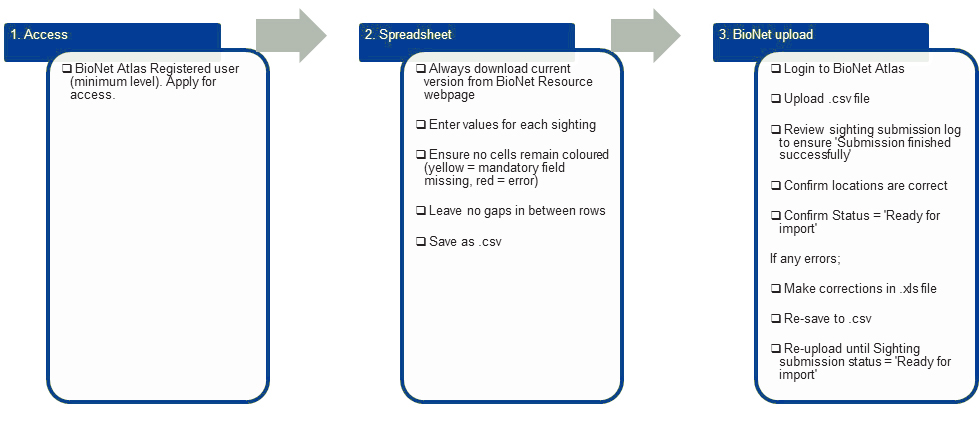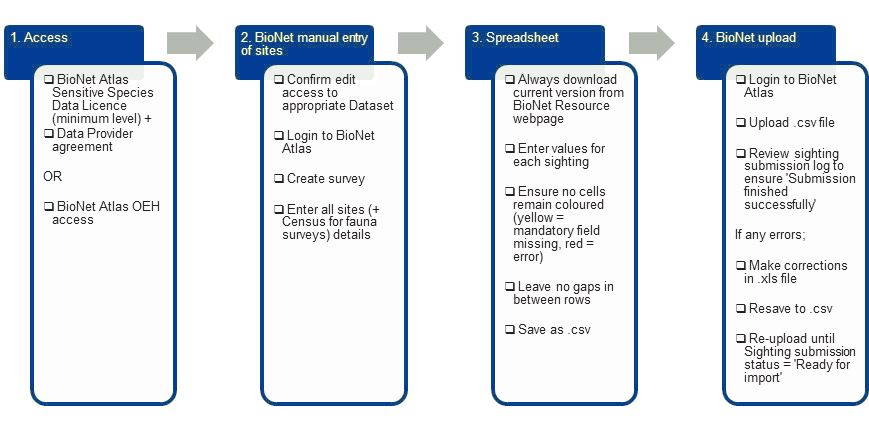You can contribute species records by entering data directly into the BioNet Atlas interface, or by bulk uploading data using the excel spreadsheets provided.
There is a different upload process for systematic survey and incidental species sightings. Refer to the flowchart for process steps.
Validations occur both on entry into the spreadsheet and for upload within the application, giving you, the contributor, greater input and accountability in ensuring your data is incorporated into BioNet Atlas as accurately as possible.
How do I upload Species Sightings data?
Sightings of plants and animals not captured through a systematic survey (for example, unusual one-off sightings) are incorporated into the Species Sightings data collection in a 3-step process.
Guided video tutorials
- Populating the Species Sightings spreadsheet
- Uploading the Species Sightings spreadsheet to BioNet Atlas
How do I upload Systematic Survey data?
All flora and fauna survey data that captures survey effort (that is, number of people hours involved, number of traps per night) and the ability to infer negative data (that is, absence of data or sites where sightings were not made) is incorporated into the Systematic Surveys data collection in a 4-step process.
Future plans
We appreciate the current upload process is cumbersome and have initiated a project to streamline the data supply and upload process.

